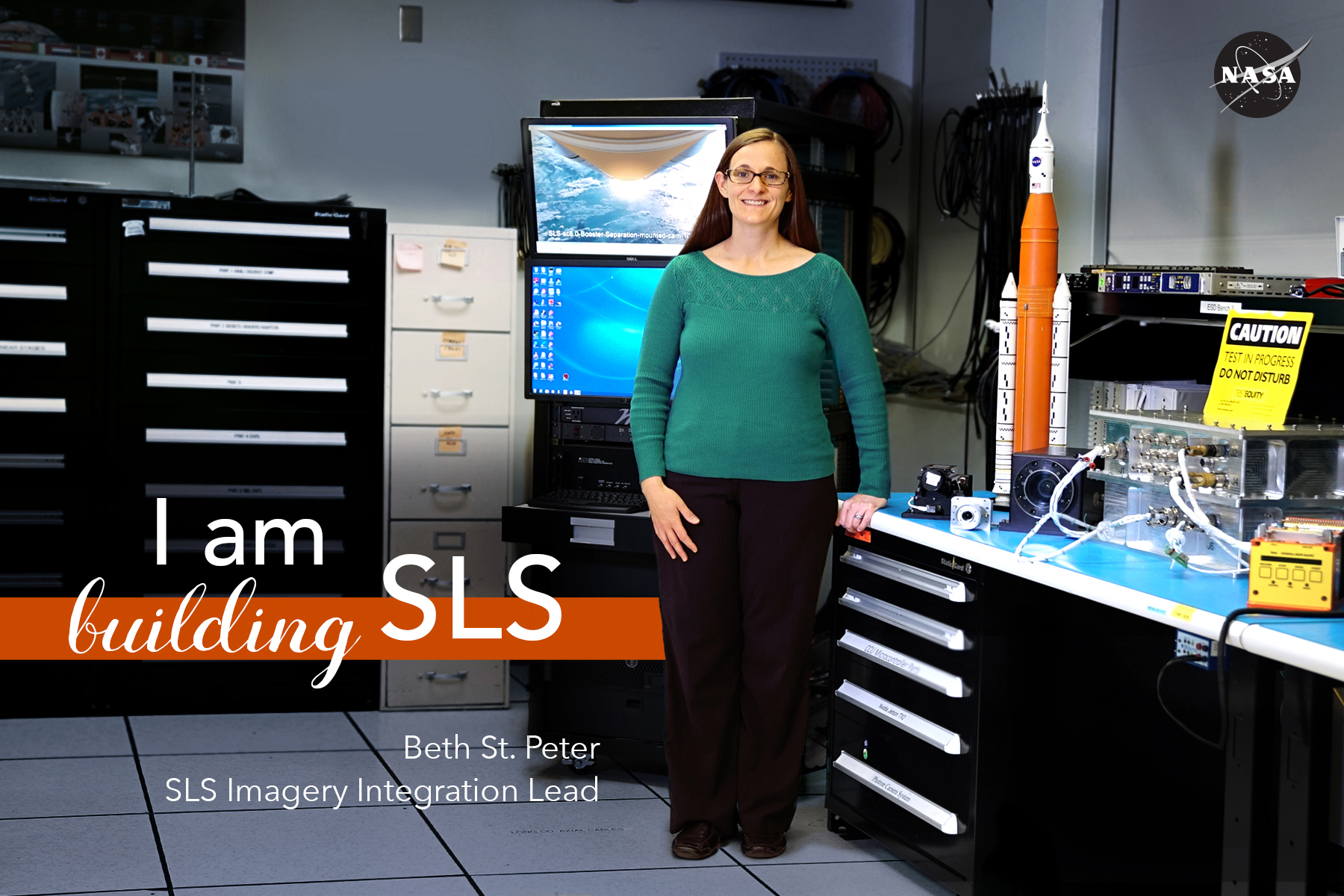I Am Building SLS: Beth St. Peter
NASA SLS Imagery Integration Lead
Capturing photographs of historical moments can teach us a lot, especially when it comes to launching the world’s most powerful rocket, NASA’s Space Launch System. As the SLS imagery integration lead, my team and I use data and information from these images to improve future missions.
Years before SLS soars off the launch pad, my team plans how we will capture the images NASA needs not only to document this historic launch but also to capture important engineering data. We coordinate with engineers at the agency’s Kennedy Space Center in Florida, Johnson Space Center in Houston and Langley Research Center in Hampton, Virginia, to use the cameras on the rocket, on the ground and in the air to determine how the rocket lifts off, clears the mobile launcher and travels during ascent. What we do is called photogrammetry, or the use of photography to measure distances between objects, for the SLS program.
Our team at NASA’s Marshall Space Flight Center in Huntsville, Alabama, designed and built the SLS onboard cameras for Exploration Mission-1, the first flight of SLS and the Orion spacecraft. We also came up with the photo markings designs on SLS — the checkerboard patterns you see on the rocket — to make important observations. We can see how the pieces of the rocket separate from each other and how close the solid rocket boosters come to the core stage when they are jettisoned. Because this will be the inaugural flight of the rocket, engineers have computer models telling them where the boosters will be in space relative to the core stage. But real-world photogrammetric data will tell them exactly where the boosters are relative to the core stage.
I began my career at Kennedy before transferring to NASA’s Johnson Space Center in Houston, where I got involved with imagery. Now at Marshall, I work with our small team to successfully communicate with technicians and engineers to accomplish our mission.
Outside of my job with NASA, I take many other photographs, mainly of my four daughters, all under the age of 10. My husband and I spend a lot of time at softball games and piano recitals, and we love to explore the outdoors as a family. I tell my daughters that every piece of the puzzle counts and every member of the team matters—not only the astronauts that will be launched on the rocket, but also the engineers doing important work before the rocket leaves Earth. Thousands of people are working together to build America’s new rocket to go to the Moon, Mars and beyond — and I’ll be there to capture it on camera — well, actually, multiple cameras!



























